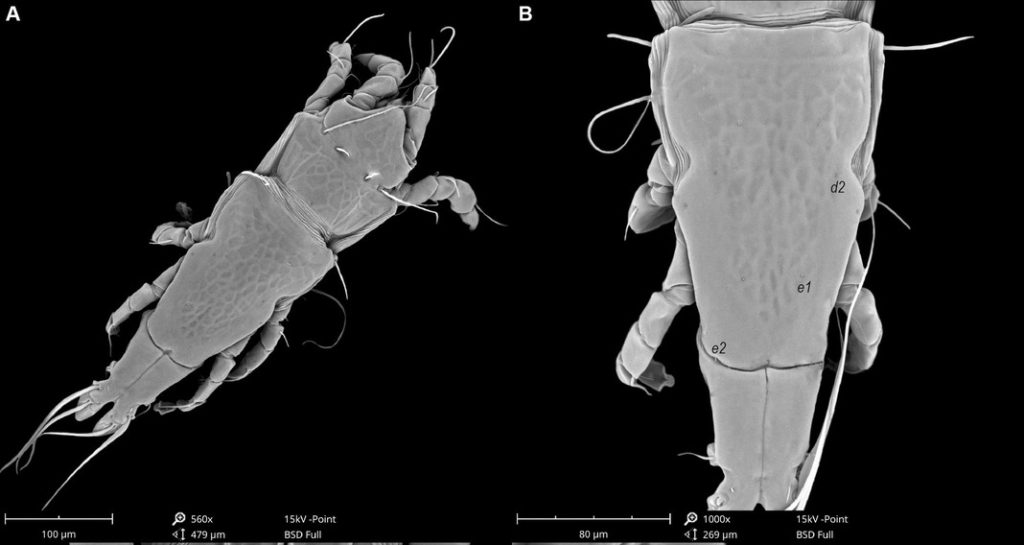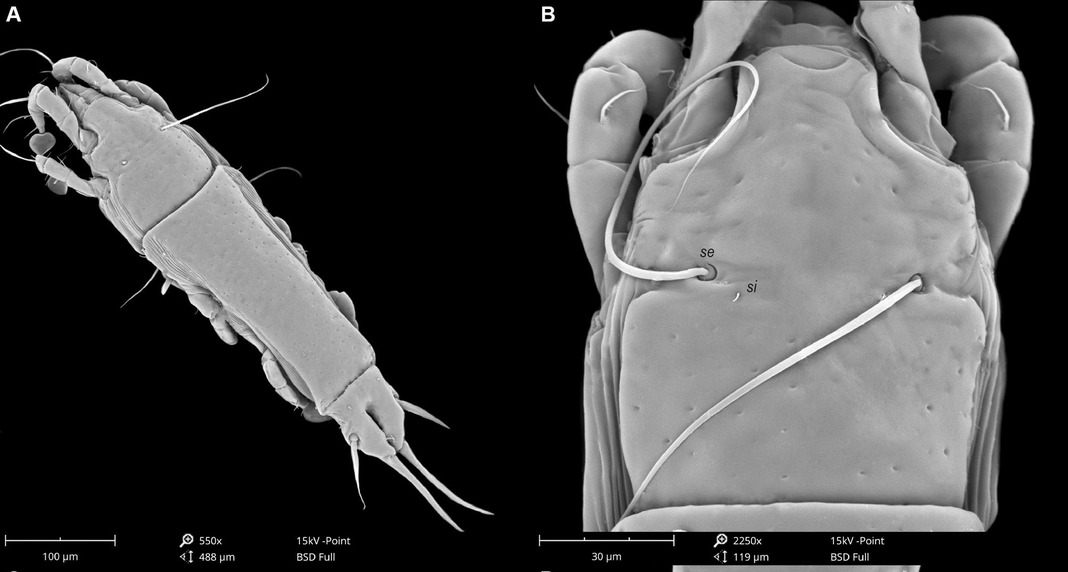ROOPAK GOSWAMI
Shillong, Dec 3: In the lush forests of Meghalaya, researchers have stumbled upon two previously unknown species of feather mites while examining birds for routine ecological studies.
The mites, later identified as Trouessartia thalassina and Proterothrix sibillae, were found feeding on Old World flycatchers—specifically, the Verditer Flycatcher (Eumyias thalassinus) and the Small Niltava (Niltava macgrigoriae). This unexpected discovery highlights the hidden complexity of India’s biodiversity.
The research team, led by Ioana Cristina Constantinescu from the “Grigore Antipa” National Museum of Natural History in Romania, included scientists Costică Adam, Gabriel Bogdan Chișamera, Viorel Dumitru Gavril, Rozalia Motoc, Doru Simon Dobre, Ioana Cobzaru, and D. Khlur B. Mukhim from Lady Keane College, Shillong. Their findings were recently published in Acarologia, a leading journal specializing in acarology. Both the feather mites were found in Kharang, East Khasi Hills district.
What Are Feather Mites?
Feather mites are microscopic arachnids that inhabit bird feathers and skin, feeding on oils, skin flakes, and organic debris. Typically symbiotic, they help maintain feather health by removing excess oils and detritus. However, under certain conditions, they can become parasitic, causing irritation or damage to feathers. Feather mites are found globally and are transferred between birds through close contact, particularly during nesting. Their diversity often reflects the health of a bird’s habitat.
The birds captured using mist-nets were identified and visually checked for the presence of mites. After collecting of mites, avian hosts were released back to the wild.
A Chance Discovery in the Wild
The team was in Meghalaya’s subtropical forests conducting a biodiversity survey when they noticed minute mites clinging to the feathers of the captured flycatchers. This incidental discovery turned into a major scientific breakthrough after close examination revealed that these mites belonged to previously undocumented species.

What Makes T. thalassina and P. sibillae Special?
These two new species exhibit unique features that set them apart from previously known feather mites. T. thalassina is distinguished by its semi-ovate terminal lamellae and lanceolate setae in males, while females have unusual non-sclerotized lacunae. P. sibillae, a member of the wolffi species group, is notable for its larger size and distinctive circular lacunae on its prodorsal shield, along with unique genital structures in males
Unique Names Reflecting Origins
The newly discovered mites have been named in honor of their origins and inspirations:
Trouessartia thalassina: Named after the Verditer Flycatcher, whose dazzling sea-green plumage inspired the species name thalassina, meaning “sea-green” in Latin.
Proterothrix sibillae: Named after Maria Sibylla Merian, a renowned German naturalist and one of the earliest women in taxonomy, known for her meticulous illustrations and studies of insects
Preserving Meghalaya’s Biodiversity
The discovery of these mites emphasizes the ecological richness of Meghalaya’s avian habitats. The researchers ensured that their methods, including the use of mist-nets, were minimally invasive, releasing the birds back into the wild after careful examination. The study was partially funded by the Romanian Academy and underscores the importance of international collaboration in biodiversity research.
A Call for Continued Exploration
The accidental discovery of these feather mites adds valuable data to the global taxonomy of mites and reinforces Meghalaya’s status as a hotspot for new species. This breakthrough encourages continued exploration and conservation of the region’s unique ecosystems, ensuring their protection for future generations.




